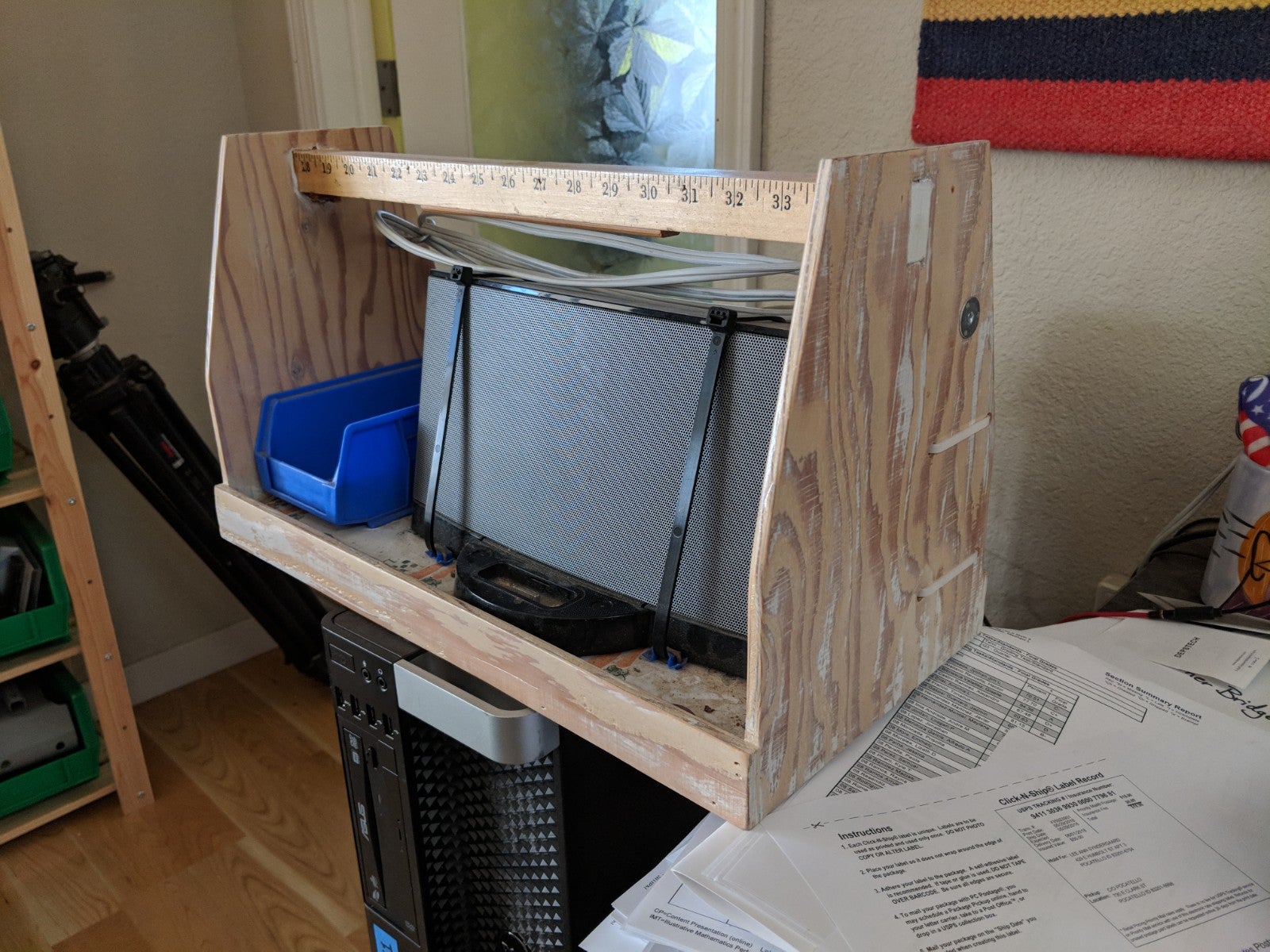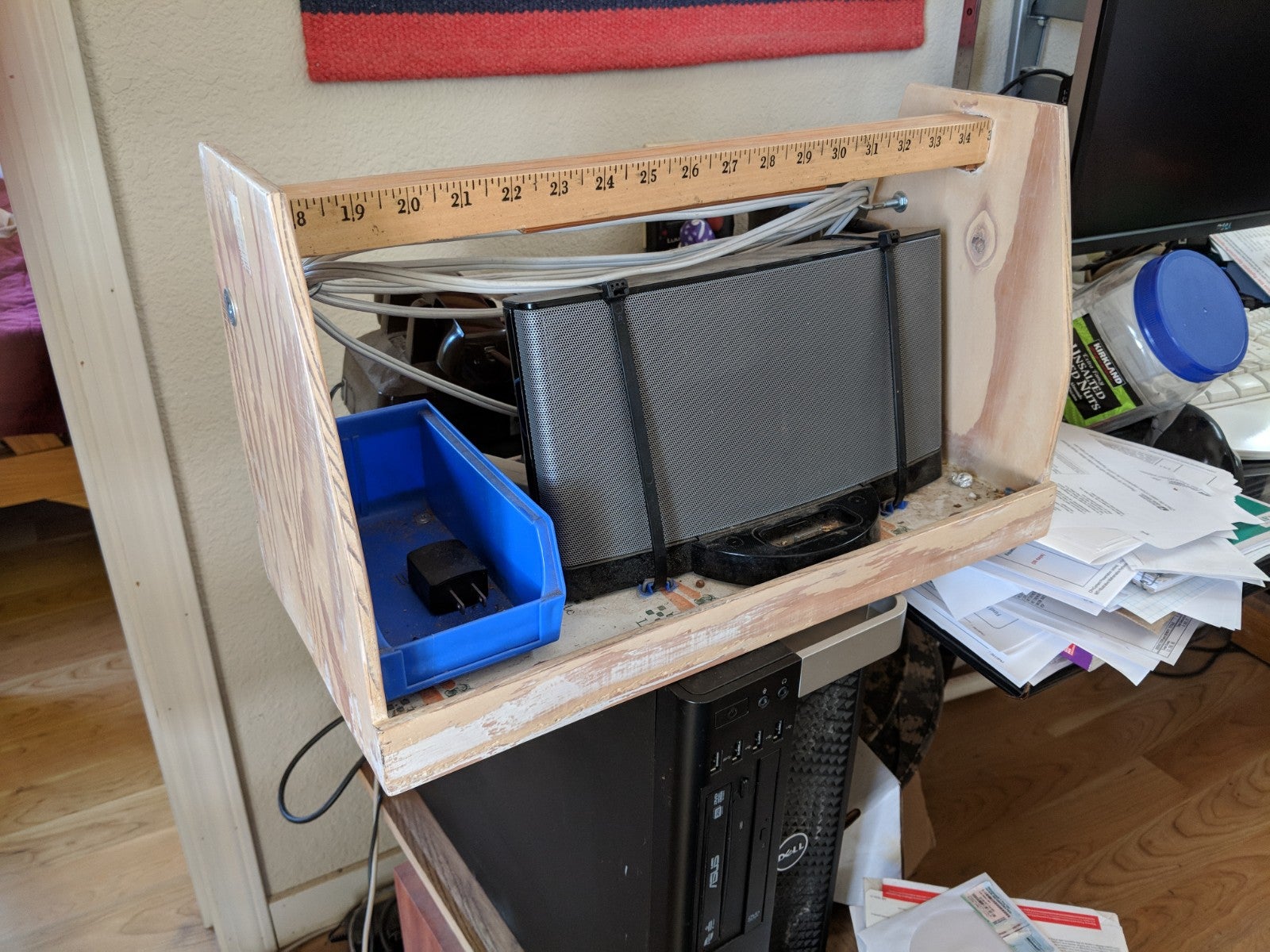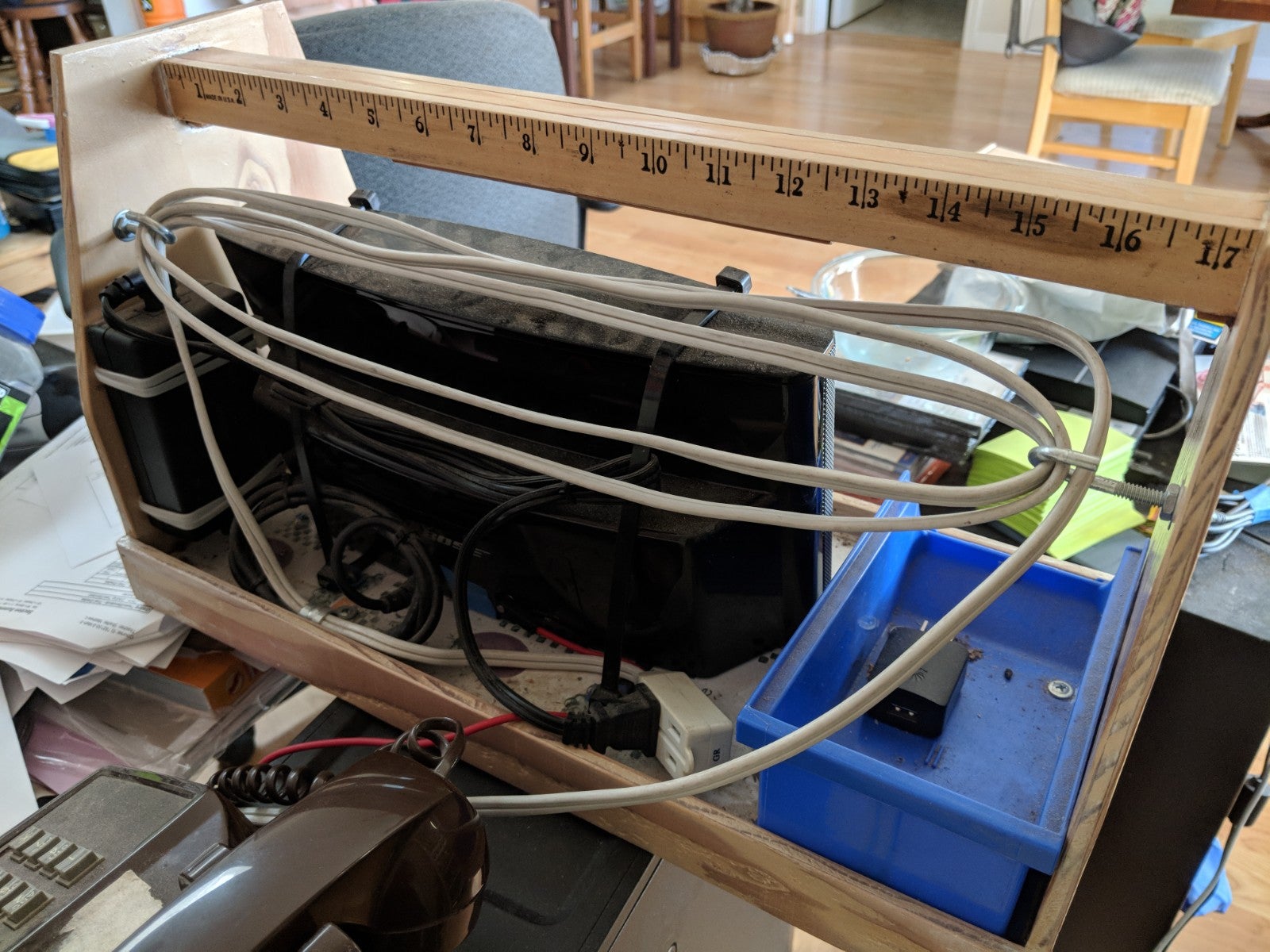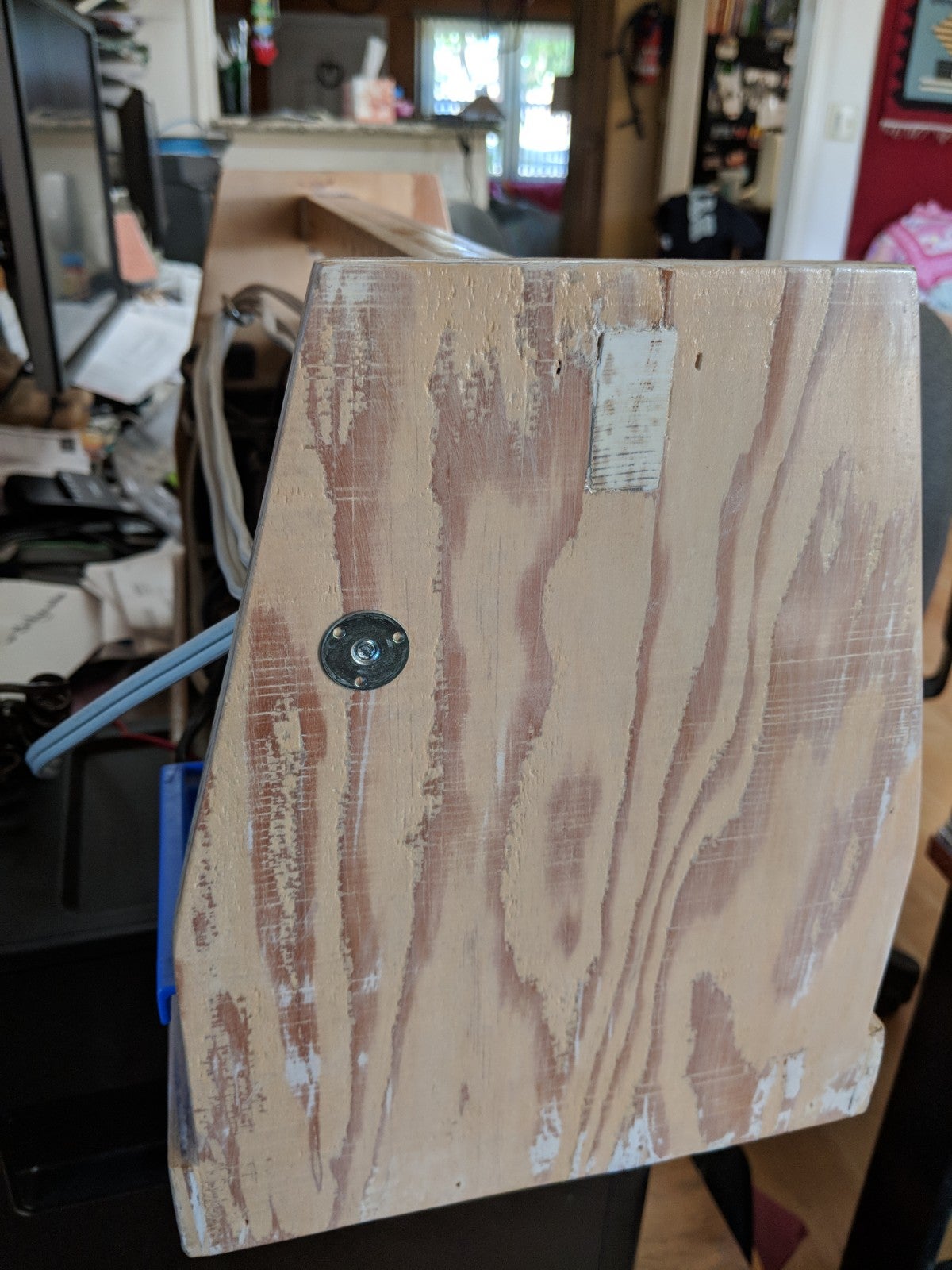 "Rusty Vandura - www.tinyurl.com/keepoppo" (rustyvandura)
"Rusty Vandura - www.tinyurl.com/keepoppo" (rustyvandura)
06/02/2018 at 10:34 ē Filed to: None
 0
0
 24
24
 "Rusty Vandura - www.tinyurl.com/keepoppo" (rustyvandura)
"Rusty Vandura - www.tinyurl.com/keepoppo" (rustyvandura)
06/02/2018 at 10:34 ē Filed to: None |  0 0
|  24 24 |
However, according this
!!!error: Indecipherable SUB-paragraph formatting!!!
,
which cites the aforementioned Cisco report, rebooting alone wonít do
the trick: ďPart of the code used by VPNFilter can still persist until
the affected device is reset to its factory-default settings.Ē
!!! UNKNOWN CONTENT TYPE !!!
 GLiddy
> Rusty Vandura - www.tinyurl.com/keepoppo
GLiddy
> Rusty Vandura - www.tinyurl.com/keepoppo
06/02/2018 at 10:50 |
|
I understand this is true, however the code tries to pull a couple images from Flickr (I think thatís the site) that have imbedded malware, and failing that, it goes to a website. The FBI was able to remove the images and pull down the website, thus neutering VPNfilter. However, Iíd factory reset any router affected just to be sure.
 winterlegacy, here 'till the end
> GLiddy
winterlegacy, here 'till the end
> GLiddy
06/02/2018 at 11:11 |
|
If the codeís out there in the wild, expect variants to show up that are much smarter about how they pull down their malicious code.
 Rusty Vandura - www.tinyurl.com/keepoppo
> GLiddy
Rusty Vandura - www.tinyurl.com/keepoppo
> GLiddy
06/02/2018 at 11:25 |
|
Factory reset and update the firmware. Iím using an Asus router with custom firmware from an outfit called Merlin.
 Rusty Vandura - www.tinyurl.com/keepoppo
> winterlegacy, here 'till the end
Rusty Vandura - www.tinyurl.com/keepoppo
> winterlegacy, here 'till the end
06/02/2018 at 11:26 |
|
I have an Asus router with custom firmware from an outfit called Merlin. I did a factory reset this morning and updated the firmware.
 atfsgeoff
> Rusty Vandura - www.tinyurl.com/keepoppo
atfsgeoff
> Rusty Vandura - www.tinyurl.com/keepoppo
06/02/2018 at 11:37 |
|
The only ďconsumerĒ router I have is just an extra-feature wireless access point inside my internal network, running dd-wrt firmware. My internet-facing router is a Ubiquiti ERLite-3 running the latest firmware version as of a week ago. I also have ridiculously long administrator passphrases for internet-facing devices.
*shrug*
 Rusty Vandura - www.tinyurl.com/keepoppo
> atfsgeoff
Rusty Vandura - www.tinyurl.com/keepoppo
> atfsgeoff
06/02/2018 at 11:42 |
|
My hope is that my router is sufficiently ďstrongĒ that the malware will just move on to one of the 2 billion other homes with run-of-the-mill routers.
 ttyymmnn
> Rusty Vandura - www.tinyurl.com/keepoppo
ttyymmnn
> Rusty Vandura - www.tinyurl.com/keepoppo
06/02/2018 at 11:47 |
|
Like mine?
 Rusty Vandura - www.tinyurl.com/keepoppo
> ttyymmnn
Rusty Vandura - www.tinyurl.com/keepoppo
> ttyymmnn
06/02/2018 at 11:52 |
|
I donít remember what you have... Did I bring you one? Did it die?
 Ash78, voting early and often
> Rusty Vandura - www.tinyurl.com/keepoppo
Ash78, voting early and often
> Rusty Vandura - www.tinyurl.com/keepoppo
06/02/2018 at 11:57 |
|
Norm Abram advises you to just use your router outside.

 winterlegacy, here 'till the end
> Rusty Vandura - www.tinyurl.com/keepoppo
winterlegacy, here 'till the end
> Rusty Vandura - www.tinyurl.com/keepoppo
06/02/2018 at 11:59 |
|
The Netgear unit I have claims it has a firmware update, but doesnít actually find one.
I suppose Iíll have to download it from the website since itís so stupid.
Netgear firmware has been terrible...
 GLiddy
> atfsgeoff
GLiddy
> atfsgeoff
06/02/2018 at 12:00 |
|
Iím running Sophos XG on a quad-core Xeon 1U server as a firewall/router/security device myself, so yeah, not really worried about the consumer router infection. Itís overpowered and power hungry, but it gives me the network control I desire.
 Rusty Vandura - www.tinyurl.com/keepoppo
> Ash78, voting early and often
Rusty Vandura - www.tinyurl.com/keepoppo
> Ash78, voting early and often
06/02/2018 at 12:03 |
|
And skip the hearing protection? I used to watch that guy, but I grew tired of his s#|+ always turning out perfect because he had fancy tools and billion-dollar material. I like my stuff which turns out pretty nice and modest tools and cutoffs from Home Despot.
 Rusty Vandura - www.tinyurl.com/keepoppo
> winterlegacy, here 'till the end
Rusty Vandura - www.tinyurl.com/keepoppo
> winterlegacy, here 'till the end
06/02/2018 at 12:05 |
|
You can get a refurbished Asus AC66 or AC68 router on Ebay for $50/$100, respectively.
 winterlegacy, here 'till the end
> Rusty Vandura - www.tinyurl.com/keepoppo
winterlegacy, here 'till the end
> Rusty Vandura - www.tinyurl.com/keepoppo
06/02/2018 at 12:07 |
|
The fact that the AC66 has wireless AC has me sold, so Iíll have to keep an eye out once I have some disposable income to work with.
 Ash78, voting early and often
> Rusty Vandura - www.tinyurl.com/keepoppo
Ash78, voting early and often
> Rusty Vandura - www.tinyurl.com/keepoppo
06/02/2018 at 12:12 |
|
So much this. It was a sight to behold, but it really raised the hopes and dreams of a whole generation of young men to unattainable levels.
Hi, Iím Norm and Iím gonna build a mahogany sailboat in two short episodes!
 Rusty Vandura - www.tinyurl.com/keepoppo
> winterlegacy, here 'till the end
Rusty Vandura - www.tinyurl.com/keepoppo
> winterlegacy, here 'till the end
06/02/2018 at 12:13 |
|
This setup was recommended by an exceedingly paranoid friend who knows much more about these things than I do. (Iíve since parted ways with him, but Iíve no reason not to assume itís a solid recommendation.)
 Rusty Vandura - www.tinyurl.com/keepoppo
> winterlegacy, here 'till the end
Rusty Vandura - www.tinyurl.com/keepoppo
> winterlegacy, here 'till the end
06/02/2018 at 12:13 |
|
What is wireless AC?
 winterlegacy, here 'till the end
> Rusty Vandura - www.tinyurl.com/keepoppo
winterlegacy, here 'till the end
> Rusty Vandura - www.tinyurl.com/keepoppo
06/02/2018 at 12:22 |
|
Itís one of the various wireless standards. It goes B -> G -> N -> AC for (oldest standard to newest standard,) and just about every medium to high end router on the market supports B/G/N/AC.
Wireless AC supports a ton of new features, but for the most part the main reason to go to wireless AC is beamforming. Imagine a spotlight from the router, and it points it at your phone/computer/other electronic device - thatís beamforming in a nutshell, but it only works with other wireless AC devices.
Wireless AC is ridiculously fast as well - wireless N seems to only have a maximum throughput of about 50 Mbps, which is fine for most networks, but I have access to a 100Mbps down connection.
 atfsgeoff
> GLiddy
atfsgeoff
> GLiddy
06/02/2018 at 12:22 |
|
Yeah, I used to use a rackmount server running pfSense but it was just so overkill for a network that might be running five or six devices at any given time with, at most, 3 concurrent users.
 ttyymmnn
> Rusty Vandura - www.tinyurl.com/keepoppo
ttyymmnn
> Rusty Vandura - www.tinyurl.com/keepoppo
06/02/2018 at 12:26 |
|
The router you left got really flaky. Iím back to an old Cisco router.
 Rusty Vandura - www.tinyurl.com/keepoppo
> ttyymmnn
Rusty Vandura - www.tinyurl.com/keepoppo
> ttyymmnn
06/02/2018 at 12:31 |
|
We should definitely upgrade. See email...
 Rusty Vandura - www.tinyurl.com/keepoppo
> Ash78, voting early and often
Rusty Vandura - www.tinyurl.com/keepoppo
> Ash78, voting early and often
06/02/2018 at 12:35 |
|
I think of myself as a wood fabricator ; keywords: functional and tidy .
Example:




 RallyDarkstrike - Fan of 2-cyl FIATs, Eastern Bloc & Kei cars
> Rusty Vandura - www.tinyurl.com/keepoppo
RallyDarkstrike - Fan of 2-cyl FIATs, Eastern Bloc & Kei cars
> Rusty Vandura - www.tinyurl.com/keepoppo
06/02/2018 at 12:45 |
|
I have one of the affected routers, but I run the open-source DD-WRT firmware on it, rather than the stock firmware....this means I have no idea if it is still susceptible or not...
That being said, I havenít reset it to factory specs, but I did upgrade it to the latest DD-WRT build as of a day or two after the whole situation sprang into the news, so I like to think Iíll be OK!
 Rusty Vandura - www.tinyurl.com/keepoppo
> RallyDarkstrike - Fan of 2-cyl FIATs, Eastern Bloc & Kei cars
Rusty Vandura - www.tinyurl.com/keepoppo
> RallyDarkstrike - Fan of 2-cyl FIATs, Eastern Bloc & Kei cars
06/02/2018 at 12:51 |
|
My theory: itís reasonable to suppose that your efforts ó and mine ó make us less susceptible to most common attacks than most of the other billions of people out there. Just keeping our fruit higher on the tree.